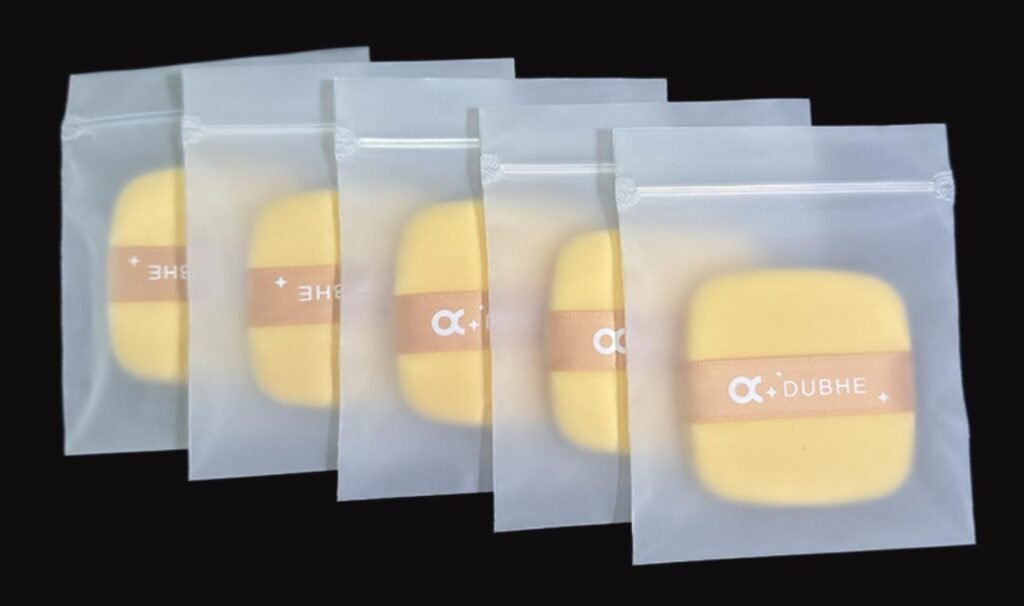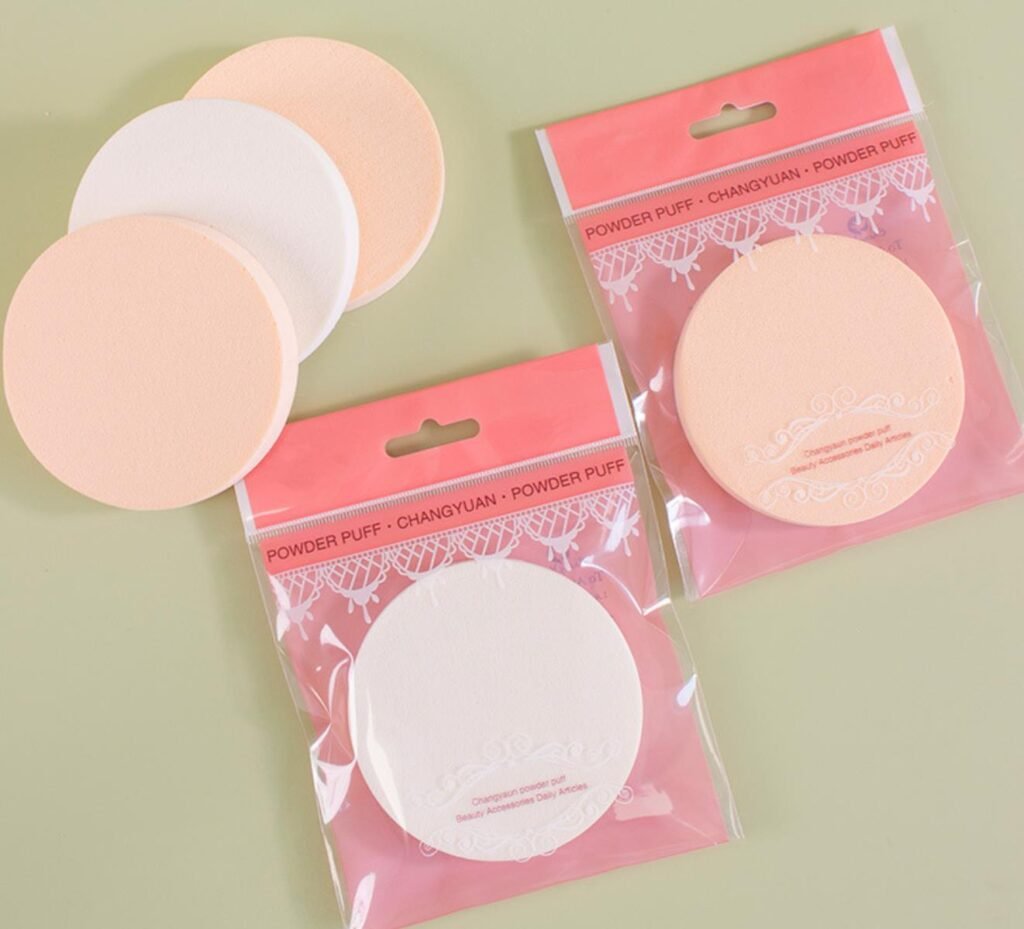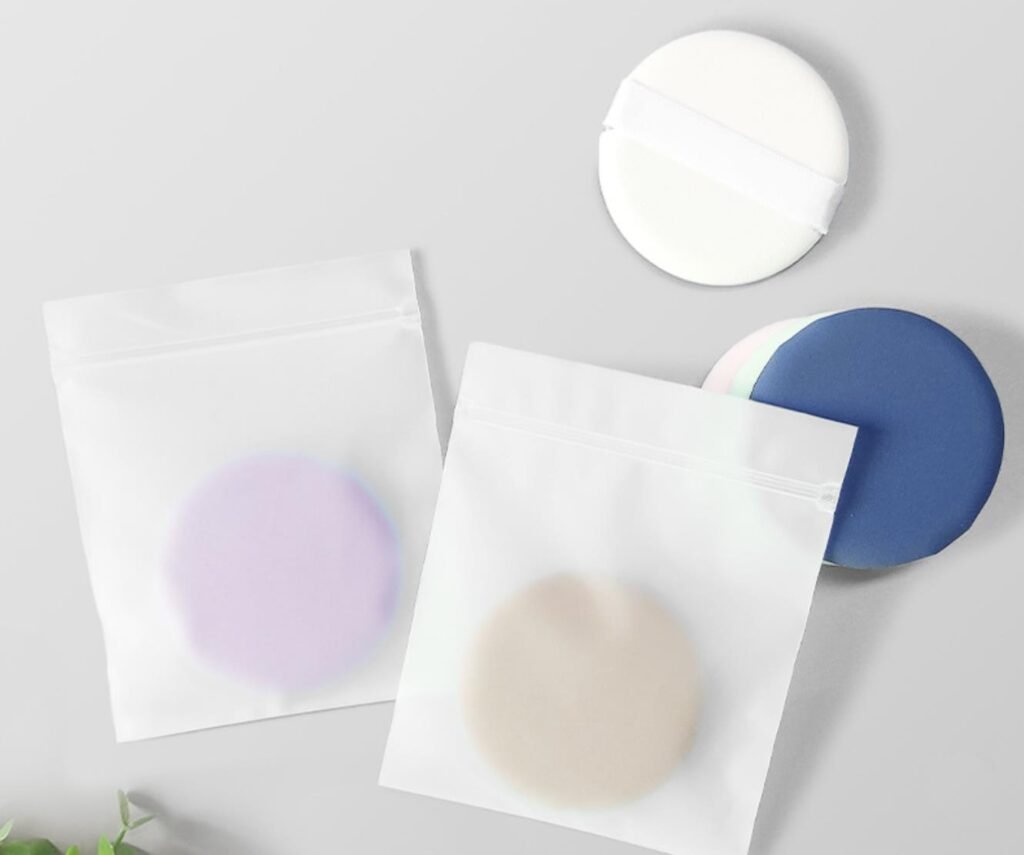Hey there. If you’re sourcing gift packaging for Rubycell puffs, you’ve likely faced the “plastic smell” of PVC. It’s a real headache. I’m diving into why this happens and why so many brands are making the switch to EVA, a move that’s about more than just eliminating odor.
The primary reason global beauty brands are switching from PVC to EVA for Rubycell puff gift packaging is to eliminate the material’s characteristic chemical odor, which can degrade the luxury unboxing experience. EVA provides a premium, odor-free alternative that is also more consistent in texture and easier to brand with printing.
But the full story is more nuanced. Let’s break down the real pros and cons of each material, so you can make the smartest decision for your brand.
#1 The Unboxing Experience: First Impressions Are Everything【

Let’s be real. The moment a customer opens a “gift” package and is hit with a chemical smell, the magic is gone. That “new car smell” is great for cars; it’s terrible for beauty products.
- PVC’s Big Downside: That signature plastic odor comes from volatile organic compounds (VOCs) and plasticizers (like phthalates) used to make the PVC soft. These compounds off-gas over time. In a sealed package, this smell gets trapped and then… poof… it hits your customer. It immediately signals “cheap” and “industrial,” not “luxury” or “thoughtful gift.”
- EVA’s Winning Trait: EVA copolymer is inherently low-odor and doesn’t require the same heavy plasticizers. An EVA package typically has a neutral smell right out of production. This ensures the first interaction with your brand is visual and tactile, not olfactory in a bad way.
The bottom line: If your brand promise includes a premium unboxing experience, PVC’s odor is a tangible risk. EVA safeguards that experience.
#2 Material Feel & perceived Quality: It’s All in the Hands
Your customers will touch this package before they touch the puff. The material’s feel subconsciously tells them what to expect.
- PVC’s Pros and Cons: PVC can be made very soft and pliable, which is a plus. However, this softness can sometimes feel too thin or tacky. The quality can feel inconsistent. On the other hand, a stiffer PVC can feel brittle and cheap.
- EVA’s Consistent Performance: EVA has a slightly matte, velvety texture that is often perceived as more premium. It’s consistently smooth and has a slight cushiony feel that communicates durability and quality. It feels substantial in the hand without being heavy.
The bottom line: EVA generally wins on perceived quality and consistency of feel. It simply feels more like a “gift” and less like disposable packaging.
#3 Branding & Customization: Getting Your Logo Right

You’re putting your brand on this. The material needs to be a good canvas.
- PVC’s Limitations: While PVC can be printed on, its often glossy and sometimes uneven surface can pose challenges. The finish might not look as high-end. Debossing or embossing can work well, but it’s the printing that can sometimes lack opacity and vibrancy.
- EVA’s Advantage: EVA’s matte surface is a dream for branding. It absorbs ink beautifully, resulting in crisp, vibrant, and high-opacity prints. It’s also excellent for laser engraving, giving a super premium, burnt-in look for your logo. For brands that value a sharp, clean aesthetic, EVA is often the better partner.
The bottom line: For bold, clean, and high-quality branding, EVA’s surface is more reliable and offers a more premium finish.
#4 Durability & Protection: More Than Just a Pretty Face
Gift packaging still has a job to do: protect the product inside.
- PVC’s Strength: Don’t underestimate PVC. It’s a tough, durable material that is water-resistant and provides a excellent barrier against dust and moisture. It will definitely protect the puff during shipping and on the shelf.
- EVA’s Resilience: EVA is also highly durable, with excellent tear resistance. One of its key advantages is its low-temperature toughness, meaning it’s less likely to become brittle and crack in cold transit environments. It also offers good cushioning, acting as a shock absorber.
The bottom line: Both materials are highly durable and protective. PVC is a strong barrier, while EVA offers better all-around resilience and cushioning.
#5 The Cost Conversation: The Real Price of “Cheap”
This is where most people assume PVC wins outright. But let’s look deeper.
- PVC’s Apparent Win: On a pure per-unit cost basis, PVC is often cheaper to produce than EVA. This is its single biggest advantage and the main reason it’s been so widely used for decades.
- EVA’s Value Argument: However, “cost” isn’t just the price on the invoice.
- Brand Equity Cost: What is the cost of a customer associating your brand with a cheap plastic smell?
- Returns & Complaints: While rare, what is the cost of handling complaints or even returns linked to the packaging odor?
- Sustainability Perception: As we’ll see next, EVA has a perception edge that can add value to your brand story.
The bottom line: PVC wins on upfront cost. But EVA can provide a better return on investment by protecting and enhancing your brand’s premium positioning.
#6 Sustainability & Recycling: Navigating a Murky Area
I won’t greenwash this for you. The truth is, both materials have challenges here, but they are perceived very differently.
- PVC’s Challenges: PVC is notoriously difficult to recycle and is rarely accepted in curbside programs. When incinerated, it can release harmful chlorinated compounds. For a growing segment of consumers, PVC is a red-flag material.
- EVA’s Position: EVA is also not widely recycled through municipal systems. However, it is chlorine-free and non-toxic. Its perception in the market is significantly better. It’s often grouped with “friendlier” plastics. You can more credibly talk about its low-odor, non-toxic properties without facing claims of greenwashing.
The bottom line: Neither is a true “green” solution, but EVA carries far less environmental baggage and aligns better with the values of modern beauty consumers.
Conclusion: So, Which One is Right for YOUR Brand?

Alright, we’ve laid it all out on the table. So, what’s the final call?
Here’s my honest take:
- Stick with PVC if… your absolute, non-negotiable priority is the lowest possible unit cost, and you are confident the product’s low price point overshadows any potential packaging downsides. It’s a functional, protective choice for mass-market, high-volume tiers where the “gift” aspect is secondary to the product inside.
- Make the Switch to EVA if… your brand competes on quality, experience, and a premium feel. If you’re selling a “gift,” a “luxury” item, or simply want to ensure your brand is associated with quality from the first touch, EVA is the clear winner. The cost to eliminate the odor risk and upgrade the perceived quality is, for most brands, a smart investment.
The trend is clear. Brands are becoming more sophisticated, and customers are more discerning. Eliminating that plastic odor isn’t just a small detail—it’s a direct investment in your brand’s perceived value.
Your Partner in Perfect Packaging
Navigating the pros and cons of PVC and EVA can feel complex, but your sourcing decision doesn’t have to be. You now have the knowledge; what you need is the right partner to bring it to life.
At PANDA SPONGE, we don’t just manufacture top-tier makeup sponges and Rubycell puffs—we’re your experts in end-to-end product presentation. Our trusted network of material suppliers allows us to offer you a full spectrum of packaging options, from standard EVA and PVC to custom solutions tailored to your brand’s exact feel, look, and budget. Best of all, we apply our rigorous quality control to every single packaging order. This means the premium, odor-free EVA sample you approve is exactly what arrives in your production run, guaranteed.
Ready to elevate your Rubycell puff gift packaging without the hassle?
Contact us today for a free, no-obligation packaging consultation and sample kit. Let’s build something beautiful, together.

Maggie Peng serves as the esteemed Product Manager at Panda Sponge, where she has garnered a wealth of experience and expertise over the course of five years. With a primary focus on product design, testing, and development, Maggie has consistently exhibited her prowess in these domains.

